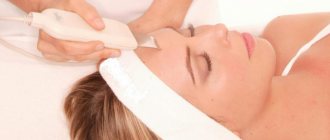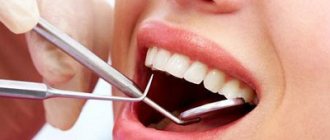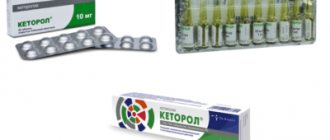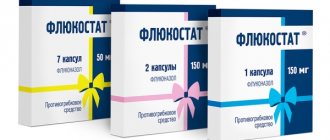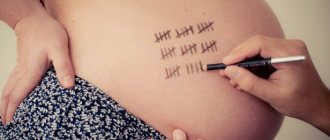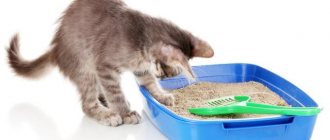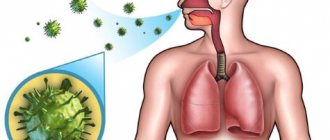Pregnancy is not only a joyful event in the life of every woman. Along with the growing belly, aesthetic changes in the face become noticeable as a result of hormonal changes in the body. The problem can be solved with the help of cosmetic procedures. In particular, many expectant mothers are interested in the possibility of attending peeling sessions, but concern about the baby’s health forces them to consider with particular attention the possible consequences for the growing body. So is it possible to peel during pregnancy?
Features of peeling during pregnancy
Since the type of cleansing in question is based on restorative and protective functions, an experienced cosmetologist will never perform a medium, or even more so a deep, chemical cleansing on a pregnant woman. And not only because of the harmful effects on the baby’s body of the components included in the peeling. The fact is that during the period of hormonal changes, the body is focused on the intrauterine development of the fetus, which reduces the immune barrier of the patient’s skin.
After serious cleansing, the restoration of epidermal cells requires the mobilization of all protective reactions. The immune system is weakened, and the hormonal background reacts with unexpected allergies. What to do in a situation where the expectant mother has already undergone peeling procedures and does not want to give up cosmetic sessions?
First of all, it is necessary to clearly determine whether the skin needs cleansing. During pregnancy, as a rule, there are many reasons, both aesthetic and physiological, for which facial peeling becomes a real salvation.
- Dry skin. The result of disturbances in the water balance in a woman’s body. Characterized by the appearance of cracks and peeling on the lips.
- Dull shade. A clear sign of vitamin deficiency. Inflammation may occur after using cosmetics or prolonged exposure to the sun.
- Age spots or rashes. Consequences of hormonal imbalance in the body.
- Decreased cellular immunity. Usually expressed by allergic reactions.
During pregnancy and breastfeeding, cosmetologists recommend performing only superficial (gentle) peelings.
Before a cleansing session, a pregnant woman should consult a specialist. You need to follow your doctor’s recommendations and remember that aggressive procedures are contraindicated at the current stage.
Almost all types of mechanical cleaning are safe for pregnant women. The exceptions will be diamond and coral - under the influence of small scrub particles there is a risk of microtrauma to the skin. When manually cleaning at home, use a viscose washcloth or a soft-bristled brush. Ultrasonic and laser peelings are recommended to be done only after childbirth, after at least 6 months.
Do not forget about the unpredictability of the gestation period. Be sure to ask your cosmetologist to test the composition for allergenicity - apply a small amount of peeling to the back of your hand or elbow.
A test test will help you determine whether the substance used for cleansing contains an allergen. Also check the peeling mass for odor. Sensory perception of foreign aromas against the background of hormones often provokes a worsening of the condition in pregnant women.
Since the components contain chemical elements, check the expiration date and product certificates, and personally verify the safety and cleanliness of the instruments. A cosmetologist's neglectful attitude toward chemicals contributes to their loss of functional qualities, and exposure to expired acids is toxic to the unborn child. Therefore, before peeling, you should definitely tell your doctor about your pregnancy, even if you are in the early stages.
During the period of bearing a child, if possible, refuse hardware procedures. The targeted action of invisible radiation has a detrimental effect on the development of the embryo. Ultrasound sessions and microcurrent treatment will also have to be postponed for a while. Even though they are considered a gentle cleaning, the risk of possible complications cannot be excluded.
Possible reactions and complications
Many women react very sensitively to changes in appearance during pregnancy. Trying to support tired skin, they agree to peeling without consulting a doctor or insist on frequent procedures.
Abuse of cleansing is complicated by increased pigmentation, the development of skin infections or adverse reactions. The penetration of chemicals through the mother's blood into the placenta increases the risk of intrauterine pathologies, including miscarriage.
Therefore, it is very important to use these procedures only under the strict supervision of a treating specialist.
Can pregnant women do dry cleaning with fruit acids or not?
In itself, such a cosmetic method of cleansing the skin does not pose a danger to the health of a woman and her unborn child. It is also important which means act as mechanisms for achieving the desired effect.
The first rule that every woman should remember is to always inform the cosmetologist about your situation. Only then will he be able to correctly select the drugs that can be used for chemical peeling. Almost every chemical compound can cause a negative reaction in the dermis, which is especially sensitive in women in this condition.
Facial cleansing with fruit acids is almost the only way to combat imperfections without harm to the expectant mother and baby.
The following are considered harmless and even beneficial:
- apple;
- wine and phytic;
- glycolic and lactic acid.
The use of other chemical compounds is not recommended. A negligent attitude to the prohibitions and prescriptions of a cosmetologist can lead to serious consequences, including miscarriage.
Peels that are contraindicated for pregnant women
Pregnant women are strictly prohibited from using aggressive acids during the scrubbing process. At the same time eliminating post-acne, scars and wrinkles, they penetrate into the deep layers of the skin. With elevated hormone levels, such peeling causes severe irritation.
Aggressive acids, the use of which is prohibited for pregnant women
- Trichloroacetic. The component cannot be used during pregnancy and breastfeeding.
- Phenolic. The chemical is toxic even to a healthy body.
- Retinoic. Penetration of the chemical can cause the development of fetal organ defects.
- Salicylic. It has the ability to be absorbed into the bloodstream and through the placental barrier, and has a detrimental effect on the fetus - it can cause anemia or cardiac pathology.
The danger of acid peels is that aggressive components have the ability to penetrate into the blood. The general blood circulation between mother and child does not exclude the entry of substance particles into the fetus’s body, which can provoke the development of intrauterine pathologies.
Stop peelings for pregnant women
Chemical peels during pregnancy in the “stop” category include all types of medium-deep and deep exfoliation. Acid, as the main component of peeling mixtures, despite the permissible concentration, is unsafe for the embryo. Chemical compounds entering the common bloodstream of mother and child can, at best, cause an allergic reaction, and at worst, cause irreversible defects in the development of the fetus. In addition, acidic compounds, burning and exposing the upper layer of the epidermis, can result in difficult-to-remove hyperpigmentation for a pregnant woman and the effect of peeling will be the opposite.
Also, during pregnancy, it is necessary to refrain from radical hardware techniques based on laser radiation or diamond grinding.
Pregnancy and subsequent lactation – about a year and a half of categorical prohibitions for such types of exfoliation as:
- retinoic (yellow) peeling;
- ABR peeling, based on alpha, beta and retinoic acids;
- TCA peel using trichloroacetic acid;
- Jessner or salicylic peeling;
- anti-aging phenol peeling;
- laser exfoliation and resurfacing;
- microcrystalline dermabrasion using a diamond tip or special diamond-coated brushes;
- ultrasonic facial cleansing;
- cryotherapy.
Permitted types of peeling
And yet I still want to be beautiful. And what should you do if, under the influence of hormonal changes, excessive pigmentation of the epidermis has formed, black spots, wrinkles have appeared, and in general the skin has lost its tone?
For pregnant women, beauty salons are ready to offer several types of procedures.
- Lactic. The mildest method of acid exposure. Restores subcutaneous microcirculation of blood flow, accelerates collagen production, normalizes the water-lipid barrier. The cleaning principle does not impair the integrity of the skin, which minimizes the risk of complications.
- Almond. Perfectly cleanses and whitens the dermis, saturates it with useful components. Relieves mild acne and comedones. Mandelic acid removes toxins, suppresses the development of pathogenic microbes, and neutralizes inflammation.
- Apple. Saturates the skin with trace elements, minerals and vitamins. Has a cleansing and rejuvenating effect.
- Glycolic (surface). Mainly used to neutralize age spots.
- Wine. Gently cleanses and improves skin tone. Used as a prophylactic against minor stretch marks.
- Azelaic. A unique manipulation that restores tissue after rosacea or acne. With the addition of lactic and mandelic acids, it has a pronounced antibacterial effect.
- Fitinous. Prescribed for rosacea and age spots. The procedure does not require long-term recovery, but it should be performed with caution during pregnancy.
- Gas-liquid. The only procedure that has no contraindications when carrying a child at all.
This is a comprehensive list of peeling services that you can use while pregnant. Regardless of which peeling you choose, be sure to consult with your doctor before the procedure.
“Green corridor” for peelings
The answer to the question of whether peeling can be done during pregnancy will be affirmative only in the case of the following types of salon exfoliation:
- peeling with malic acid (apple) – not only gently cleanses the skin of physiological and atmospheric pollutants, but is also a kind of vitamin cocktail for the epidermis, actively saturating it with fruit microelements and minerals;
- peeling with lactic acid (lactic) – a gentle acidic effect on the skin, stimulating blood flow, collagen production, saturation of cells with oxygen and deep internal hydration;
- peeling with mandelic acid (almond) – combines a strong antibacterial effect with skin whitening function. Thanks to this technique, the complexion becomes smoother and the manifestations of acne become less noticeable;
- peeling with glycolic acid (glycolic) will help cope with hyperpigmentation and smooth out the microrelief of the skin;
- peeling with tartaric acid (tartaric) will become an effective protection against the appearance of stretch marks on the face and neck by increasing skin elasticity;
- peeling with azelaic acid (azelaic) will reduce inflammatory manifestations on the face, help get rid of acne and rosacea;
- peeling with phytic acid (phytic) will be an excellent remedy for narrowing enlarged pores, as well as in the fight against pigmentation and bright vascular mesh;
- gas-liquid peeling is a universal and possible mechanical peeling of the face during pregnancy. This exfoliation assumes that only distilled water will be the contact substance, and oxygen will be the gas. The use of any additional medications, even saline solution, instead of water, is undesirable.
Peeling at home
Manual facial cleansing is a kind of mechanical peeling under familiar conditions. When using homemade formulations, be extremely careful - during periods of hormonal imbalance, even absolute sterility cannot guarantee protection against inflammation and secondary infection.
Fruit peels (gommages) are very popular and practically harmless. Another option for a gentle home procedure is a natural scrub prepared with herbs (linden, chamomile, mint) with the addition of a soft abrasive (for example, finely ground tea leaves of any tea).
Homemade scrub recipes
- Oatmeal – mix steamed oatmeal with olive oil. Removes blackheads and oily shine, refreshes skin tone, smoothes expression lines. Very useful as a mask in the morning;
- Coffee – mix finely brewed coffee particles with olive or coconut oil. Refreshes, gives the face a light blush and smoothes the skin around the eyes;
- Almond – add honey and lemon juice to crushed almonds to a powdery consistency. Relieves fatigue, cleanses pores, smoothes expression lines and whitens the skin.
The composition of home peeling can be varied with essential oils - choose the scents that suit you. For example, chamomile oil perfectly soothes and disinfects the skin, and this is important if you are prone to acne.
Alternatively, you can use grape seeds for scrubbing. When ground into crumbs, they will be an excellent means of cleansing pores and stimulating capillary blood flow.
When using home peeling methods, do not neglect regular visits to a cosmetologist. Only an experienced doctor can notice possible defects and give the necessary recommendations on further care tactics.
What contraindications can be found during pregnancy?
Peeling during pregnancy is often the only way to get rid of defects that appear on the skin. A woman carrying a baby experiences changes in her body that affect the condition of the dermis, and quite often the following problems can be observed:
- dryness, which is accompanied by peeling;
- acne;
- rashes;
- pigment spots;
- a greasy, unkempt sheen that appears due to increased activity of the sebaceous glands.
Is it possible or not to cleanse in such cases, and will it affect the condition of the fetus? Cosmetologists warn that clear skin may not always be the only result of the procedure. It is quite easy to harm a baby, and often it turns out to be irreparable.
Why peelings should not be carried out - this question is quite simple to answer. Some components of the drugs used to get rid of defects are able to penetrate into the blood of the expectant mother, and then into the small body. That is why there are quite a lot of prohibitions on carrying out manipulations, and it is recommended to carefully study them before visiting a cosmetologist.
Contraindications for peeling:
- the use of devices for cleansing the dermis (even safe ultrasound is not recommended);
- the use of salicylic acid;
- increased sensitivity to cosmetics that occurs during pregnancy;
- cleaning with retinol;
- impaired blood circulation in tissues;
- purulent rashes on the skin;
- viral diseases of the dermis;
- skin problems at the peak of aggravation.
Do you know? No matter how safe the composition used for cleaning is considered, you must insist that the cosmetologist test the product on a sensitive area of the body (wrist, elbow). If the slightest signs of allergy are noticed, immediately abandon the procedure.
Reviews from real people about peeling during pregnancy
Anna, 22 years old:
During the second trimester of pregnancy, my face became covered with small brown spots. The cosmetologist said that this was a change in skin pigment and recommended milk peeling. After the procedure, the surface of the skin became smooth, silky, and after a week all the spots disappeared.
Christina, 30 years old:
I'm 8 months pregnant. Recently, my face has become somewhat dull and circles have appeared under my eyes. I really liked the coffee peeling at home. I add a drop of mint ether there. After the session, the skin is soft and tender, the circles under the eyes have disappeared. My cosmetologist said that this is harmless to the health of the unborn baby and can be done as needed.
Marina, 37 years old:
And I liked the apple peeling. During my pregnancy (4 months), I cleanse every 10 days and my skin looks young and healthy.
What can you do at home?
Natural peelings done at home are an ideal skin cleansing option for a pregnant woman. These procedures are safe for the expectant mother and the baby, mildly aggressive, but at the same time effective and efficient. Organic compositions for home peeling are easy to prepare and use; you just need to choose a couple of proven recipes and buy the necessary ingredients.
Almond-honey peeling
- 2-3 tbsp. almond powder (almonds chopped in a blender);
- 1-2 tbsp. buckwheat honey;
- ½ tsp. freshly squeezed lemon juice.
- heat buckwheat honey in a “water” bath;
- mix honey with almond powder;
- add lemon juice to the mixture;
- Apply the product onto your face using your fingertips;
- massage lightly;
- leave the mixture on your face for 15 minutes;
- rinse with warm water.
Oatmeal-coconut peeling
- 4 tbsp. Hercules;
- 3 tbsp. coconut oil.
- Pour boiling water over oatmeal and leave to steep for 10 minutes;
- melt coconut oil in a “water” bath;
- drain the water from the oatmeal and mix it with coconut oil;
- Apply the resulting mixture to your face;
- rinse off the product after 15 minutes with warm water.
Sea salt and coconut oil peeling
- 6 tbsp. finely ground sea salt;
- 3 tbsp. coconut oil
- melt coconut oil in a “water” bath;
- add sea salt crystals to the oil, stir;
- Gently apply the composition to the skin of the face;
- leave the product for 15 minutes;
- rinse with warm water.
Pregnancy is a time of many restrictions. Some usual beauty procedures for pregnant women temporarily become unavailable. For example, medium or deep chemical peels, laser rejuvenation, diamond or ultrasonic skin cleansing. But still, cosmetologists have adapted a small number of exfoliation methods for pregnant women. They must be used with caution and not abused in pursuit of the effect. If a woman has had a chemical facial peel without knowing she is pregnant, she needs to tell her gynecologist.
General recommendations
During pregnancy, the body is sensitive to changes in hormonal balance. One can only guess how this will affect a woman’s appearance in each trimester.
Problems such as:
- dryness;
- peeling;
- dermatitis;
- allergic reactions;
- acne;
- hyperpigmentation (chloasma, pregnancy mask).
Care for normal skin
We recommend the most gentle care that suits your skin type. Sometimes you can do a glycolic or almond peel. But it is better to choose soft facial brushes, sponges, washcloths and homemade exfoliators with abrasive particles:
- salt;
- sugar;
- ground oatmeal;
- sleepy coffee grounds.
Peeling is done after a warm shower, when dead skin is steamed and easily removed. After this, you can apply a cream or lotion that contains:
- collagen;
- hyaluronic acid;
- vitamin E.
These products retain moisture in the skin and create a protective barrier.
You can use pharmaceutical scrubs and gommage. But you should read the label carefully; only natural cosmetics without chemical ingredients are suitable for expectant mothers:
- parabens;
- sulfates;
- phthalic acid derivatives.
Caring for problem skin
During pregnancy, you will have to postpone the course of acne treatment, even if the rash has become worse due to the effects of hormones. Against acne, products containing salicylic acid and retinoids, derivatives of vitamin A, are used. In large doses, retinol can negatively affect a child and cause developmental defects. Salicylic acid makes facial skin even drier, more sensitive and less regenerative.
Read also: Causes and treatment of facial edema
During an exacerbation of acne, you can consult a cosmetologist and do:
- glycolic peeling with natural fruit acid;
- almond peeling;
- the most gentle peeling with lactic acid.
For sensitive skin prone to rashes, it is better to avoid scrubs with large particles and use gommage.
Procedures in salons
When visiting a beauty salon, you must inform the cosmetologist about your condition.
The specialist will assess the condition of the skin taking into account pregnancy and select gentle exfoliation methods that are safe for the fetus.
The following types of cleansing are allowed:
- Diamond - cleansing the epidermis with a device with attachments coated with diamond dust. The procedure rids the face of blackheads, peeling, and age spots.
Duration - 20-25 minutes. The cost of one session is 2000-3000 rubles.
- Gas-liquid using a Jet Peel device, which affects the face with a jet of compressed gases (carbon dioxide and oxygen) supplied under pressure at high speed from the nozzle of the nozzle.
The method is also designed to introduce thermal water, vitamins, and other drugs into the upper layer of the skin, designed to improve the condition of the epidermis.
In the first trimester and the first half of the second, cleansing with gas and water only is recommended. Then you can use vitamin preparations approved for pregnant women.
The procedure is very pleasant, time - 40 minutes. Cost - 3500-5000 rub.
- Superficial almond refers to chemical exfoliation methods. It can only be done upon recommendation.
In the second half of pregnancy, light exposure to mandelic acid will not harm the unborn child, but the body can react to complications even to the delicate effects of acid (allergies, rashes, skin irritation).
During almond cleansing, the acid slightly irritates the skin, weakening the intercellular connection between dead cells, stimulating their renewal.
The price of one session is 3000-4000 rubles.
- Enzyme is the safest for pregnant women. During the session, natural plant enzymes (bromelain, trypsin, papain) are used, which gently and delicately affect the skin of the face, cleansing, restoring natural metabolism and cellular respiration.
This method is recommended to be combined with diamond. Price - 1500-2000 rub.
- Pregnant women are sometimes recommended hardware mechanical exfoliation with round brushes for oily or combination types.
This procedure is safe for the fetus at any stage, but the recovery process can be unpredictable - long-term healing irritation, swelling, etc. The price is about 400 rubles.
Benefits of retinoic peeling for skin
Retinoic peeling is valued by cosmetologists and self-care lovers for its versatility and short recovery period after procedures. A couple of sessions of “yellow” exfoliation simultaneously eliminates several diverse appearance defects: from acne to hyperpigmentation. The safety and gentleness of retinoic cleansing in case of mild aesthetic problems allows you to perform the beauty procedure even in summer.
The peeling is called “yellow” because of the color of the main active ingredient – retinol. The chemical group of retinoids includes natural vitamin A and its artificially created structural analogues. Retinoids in complex peelings carefully interact with the skin, destroying and exfoliating dense keratosis, but without affecting living tissue. Therefore, retinoic peeling is a type of borderline, or superficial-median procedure.
Unlike other medium peels, retinol-based exfoliation is characterized by minor damage to the integrity of the skin, which means a minimal risk of complications and quick recovery. Retinol, being integrated into intercellular structures, helps tighten the skin framework and deeply renew it. Therefore, a week after the “yellow” session, many women notice that the depth of wrinkles has become smaller, the skin is lighter, and inflammation has decreased or disappeared completely.
The tightening, antiseptic and whitening effect of the yellow film of retinoic peeling has a prolonged effect and lasts for approximately 3 to 4 months. Then the course of procedures can be repeated and the supply of vitamins and antioxidants in the epidermal cells can be replenished.
- dull complexion and hyperkeratosis - a dense “crust” of keratinized cells on the surface of the skin;
- “black dots” (comedones) on the face;
- milia – “white” acne;
- shallow expression lines and first age wrinkles;
- signs of skin photoaging;
- dry skin (reduced production of the skin’s own hyaluronic acid);
- loss of elasticity (lack of collagen threads in the skin);
- the appearance of light brown pigment spots.
Women can take advantage of the miraculous benefits of retinoic peeling from the age of 35. But express rejuvenation with retinol is not available to everyone. One of the first contraindications on the list of prohibitions for yellow exfoliation is pregnancy and planning to conceive. The controversy surrounding how natural or synthesized retinol obtained by the skin from peeling compounds affects the normal formation of the fetus is still relevant. In order to understand the possible cause of concern and decide when it is better to get pregnant after yellow peeling, you need to remember the chemical properties of retinoids and their role in the body.
Home cleaning
- Natural gommages with fruit and berry juices. If during pregnancy there is no rejection of the body to fruits and berries, you can prepare very mild but effective gommages at home. Just remember that home peeling during pregnancy cannot be one-component. It is recommended to soften the effect of the main ingredient with honey, cream or herbal infusions.
- Natural scrubs based on herbal decoctions and soft abrasives. Homemade scrubs can also be used, but very rarely and carefully. It is best to use herbal decoctions or diluted infusions (chamomile, mint, linden) as a contact medium. The best abrasive for pregnancy will be ground brewed black or green tea. It is better not to use solid particles. The body's strength is already weakened, any scratch can become inflamed and bring a lot of unpleasant sensations.
This is a special peeling without peeling
Acids can solve numerous skin care issues: lightening pigment spots, spots from acne and post-acne, normalize the functioning of the sebaceous glands and eliminate excessive oiliness of the skin, get rid of comedones and blackheads, smooth out uneven skin and even out tone, indicated for dry, dull skin. aging skin, promote greater production of collagen and elastin, which means they reduce and prevent wrinkles. If you have problem or aging skin, then you...
- You can wash your face after cleansing the next morning. To do this, it is recommended to use thermal water or regular mineral water, without gas.
- You should not be exposed to open sunlight for a long time, even in winter; before going outside, you should apply a protective cream with a high UV factor.
- It is better to do without makeup for 3-4 days: this way the effect of the procedure will be more noticeable.
- Within the time allotted for rehabilitation, it is recommended to avoid the use of further exfoliants: such as, for example, toners, exfoliating wipes, etc.
- You should apply moisturizer at night. Panthenol-based ointments work well.
What problems arise with the skin during pregnancy?
The body of a pregnant woman is more vulnerable, and therefore most factors that previously seemed harmless to it become dangerous. Dramatic changes in hormonal levels affect both the psychological state and appearance of a woman. For example, in the first trimester the following may appear on the skin:
- small pimples;
- redness;
- pigmentation.
We recommend: What is hyaluronic acid peeling and how is it done?
In addition, an aesthetic “disaster” often includes:
- dryness and flaking or, conversely, oily sheen;
- acute skin reaction to ultraviolet rays;
- microcracks in the corners of the mouth, which cause pain;
- exacerbation of dermatological ailments;
- herpes;
- allergic rashes (even when using usual cosmetics);
- acne;
- age spots, etc.
It is for these reasons that many women think about professional peeling, study and weigh the pros and cons.
Deep chemical peeling of the face
Beauty requires sacrifice! This is the main motto of deep peeling. It is done much less frequently than other types of peeling, but the result is amazing.
Important: in the case of deep peeling, as with any other type, your doctor must be a real professional. If deep peeling is done correctly, the effect will be amazing!
If deep peeling is done correctly, the effect will be amazing!
Deep chemical peeling of the face is performed with phenol. However, it is chosen extremely rarely. Most often, cosmetologists perform safer peeling with trichloroacetic acid, which can be not only medium, but also deep.
